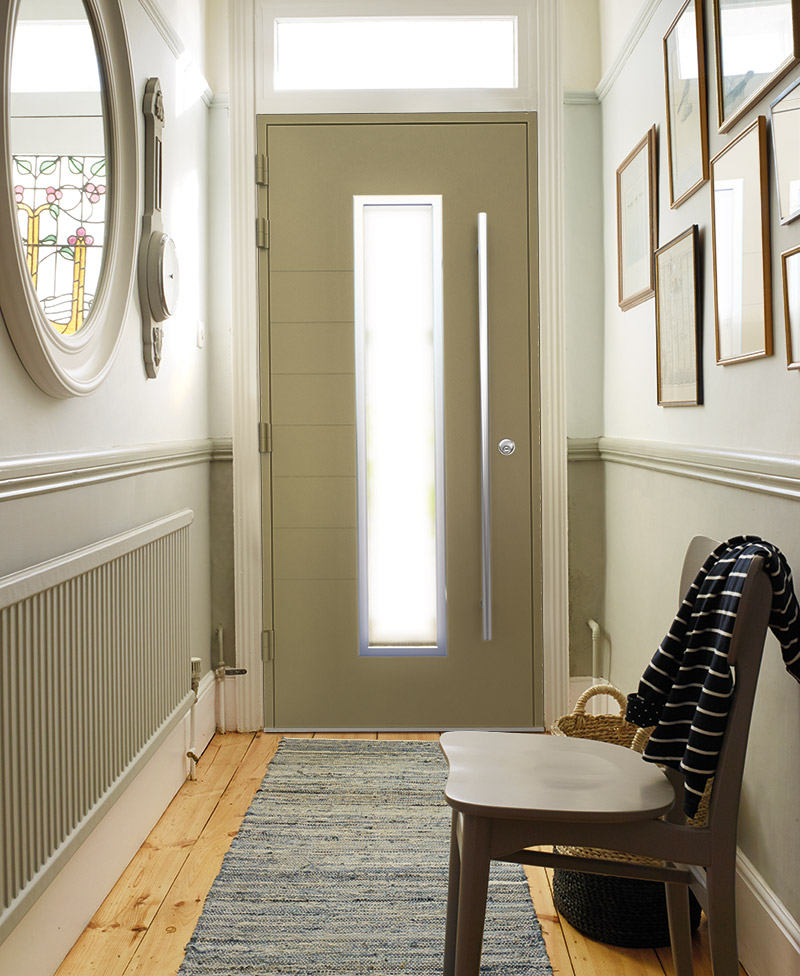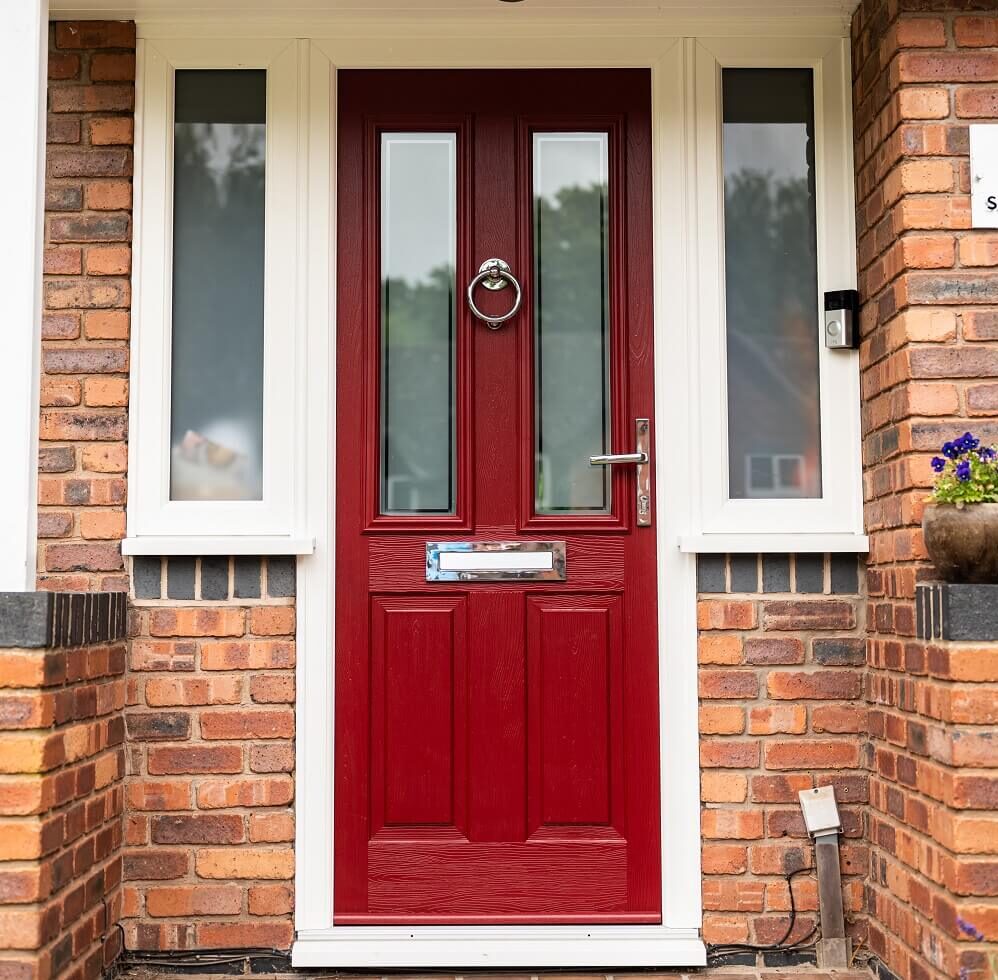Last Updated on 7 January 2025 by Josh Lucas
Can Draught Proofing Your Front Door Save Money?
By sealing gaps and improving insulation, draught-proofing your front door can significantly lower your energy bills, reduce wasted heat, and enhance the comfort of your home.
When temperatures drop, there’s nothing worse than a chilly breeze sneaking through your front door, turning your cosy home into an uncomfortable space.
Even the smallest draught can make your heating work overtime, leaving you with higher bills and a less comfortable home.
That’s where draught proofing comes in.
Draughtproofing your front door isn’t just about staying warm; it’s a simple, cost-effective way to cut your energy bills and reduce your carbon footprint.
In this guide, we’ll show you why draught-proofing matters, how to tackle common issues, and the best methods to keep your home snug all year round.
What You’ll Learn in This Article:
- Why draught-proofing is essential
- What causes a draughty door
- DIY and professional solutions.
- How to choose the best draught excluders for doors in the UK
- FAQ’s
Why Is Draught Proofing Important?
Did you know that a draughty door can potentially increase your heating costs?
According to the Energy Saving Trust, sealing gaps in doors and windows can save homeowners around £40 annually on energy bills.
Beyond financial savings, draught proofing reduces your carbon footprint and can create a more comfortable, energy-efficient home.
Imagine this: instead of cranking up the thermostat, you could stay warm by simply blocking those pesky draughts. It’s a win for your wallet and the environment!
Common Causes of Draughty Doors
We’re sure you’ve been sitting at home wondering “Where is this draught coming from?”.
Well, it could be one of these common causes that is affecting your doors and letting in unwelcome draughts.
Worn-Out Weather Stripping
Over time, seals around your door degrade, letting cold air seep through.
The material can crack, warp, or simply lose its elasticity, making it ineffective in creating an airtight seal.
Replacing weather stripping is a quick way to eliminate this issue.
Gaps Between the Door and Frame
Even well-fitted doors can develop small gaps due to wear or settling.
These gaps allow air to pass through, creating an ongoing source of draughts.
Checking the alignment and frame fit can help identify if adjustments or reinforcements are needed.
Letterboxes and Keyholes
Letterboxes and keyholes are notorious for letting in draughts.
Without proper insulation, these small openings can significantly impact your home’s warmth.
Installing covers or brush seals can effectively block airflow without hindering their functionality.
Ill-Fitting Thresholds
If your door doesn’t sit flush with the floor, cold air will creep in from underneath.
A threshold seal or a properly installed door sweep can solve this problem and improve insulation at the base of the door.

DIY Solutions to Draught Proof Your Front Door
If you’re in a pinch before you can get a professional in to sort your draught out, there are a few short term DIY solutions that you can implement to keep your home cosy and warm.
We always advise contacting your fitter or the manufacturer to ensure that you don’t void any warranties or have to fork out for replacements if something goes wrong!
Adhesive Foam Strips
Adhesive foam strips are a budget-friendly solution for sealing small gaps around the doorframe.
They’re easy to cut and install, making them an ideal choice for DIY enthusiasts.
However, they may need regular replacement as they wear down over time.
Brush or Rubber Strips
Rubber or brush strips are perfect for sealing the bottom of your door.
Brush strips are flexible and suitable for uneven surfaces, while rubber strips provide a tighter seal.
Both options are easy to install and can handle frequent use.
Letterbox Covers and Keyhole Escutcheons
Letterbox covers with brush seals block airflow without obstructing mail delivery.
Similarly, keyhole escutcheons are small covers that fit over your keyhole, preventing cold air from sneaking in while still allowing key access.
Door Sweeps
Door sweeps attach to the bottom of your door, creating an effective barrier against draughts.
They’re especially useful for external doors with uneven thresholds.
Choose from metal, plastic, or rubber sweeps based on durability and your specific needs.
Professional Solutions for Long-Term Results
While short term options can bring some joy, they can only last so long before that pesky draught is back nipping at your toes.
When it comes to giving that draught the boot, there are a few professional long-term solutions that will keep the heat in and the cold out.
Replace Weather Stripping
Professionals can install high-quality weather stripping that’s more durable than DIY alternatives. This can ensure a long-lasting seal and help maintain your home’s insulation.
Upgrade Your Threshold
Replacing or upgrading your door’s threshold can eliminate gaps at the base and improve overall energy efficiency. Professionals can recommend the best materials and designs that are best tailored to your door.
Invest in a High-Performance Door
For ultimate insulation, consider replacing your current door with a thermally efficient composite or aluminium door such as the Smart Signature or Smart Designer Doors. These modern doors come with built-in weatherproofing and superior thermal properties, making them an excellent long-term solution to draught-proofing.

Choosing the Best Draught Excluders for Doors in the UK
Material
The material of your draught excluder matters. Rubber strips are durable and effective for external doors, while brush strips are flexible and ideal for uneven surfaces. For heavy-duty use, silicone seals are a top choice.
Ease of Installation
Self-adhesive draught excluders are quick and easy to install, making them perfect for DIY fixes. However, screw-on options provide a more secure and long-lasting solution, especially for frequently used doors.
Application
Consider where the draught excluder will be used. Lightweight options work well for internal doors, while robust designs are better suited for external doors exposed to weather conditions.
Top Recommendation: For external doors, invest in professional advice and solutions to ensure it can withstand UK weather conditions and ensure lasting effectiveness.
Practical Steps to Stop Draughts
Inspect Your Door
Begin by closely inspecting your door. Look for gaps around the edges, worn seals, or openings in the letterbox and keyhole. Pay attention to corners and thresholds where draughts are most common.
Measure and Prepare
Accurate measurements are crucial when selecting draught-proofing materials. Measure the width of gaps and the length of the areas you plan to seal. This ensures you buy the right products and avoid unnecessary wastage.
Seal the Gaps
Apply weather stripping to the edges of your door, fit a door sweep to the bottom, and cover openings in the letterbox and keyhole. Ensure each component is securely installed for maximum effectiveness.
Layer Solutions
Combine multiple methods for comprehensive draught-proofing. For example, use weather stripping alongside a door sweep and install letterbox seals. This layered approach provides better insulation and energy savings.
Environmental Benefits of Draught Proofing
Draught-proofing your home not only saves money but also contributes to a greener planet.
By reducing energy consumption, you’re lowering your carbon footprint and helping combat climate change. Small, sustainable actions like sealing a door can have a significant impact over time. Additionally, maintaining a well-insulated home reduces reliance on heating systems, further decreasing energy use.
Keep Out The Cold With GFD Homes Today
Draught-proofing your front door isn’t just about keeping the cold out; it’s a smart investment in your comfort, energy savings, and the environment.
A well-sealed door enhances your home’s insulation, reduces your heating costs, and contributes to a greener planet.
If you’re ready to take the next step, call our expert team on 01642 309 576 or get an instant quote online at GFD Homes.
Let’s help you create a warmer, more energy-efficient home today!
FAQ’s for How To Draught Proof Your Front Door
How do I draught proof my front door?
Start by inspecting for gaps, then use weather stripping and a door sweep to seal them. Don’t forget letterbox covers and keyhole escutcheons for additional insulation.
Why is my front door so draughty?
Common causes include worn seals, gaps in the frame, or poorly insulated letterboxes and keyholes. Regular maintenance can help identify and resolve these issues.
How to stop a draft from coming through the front door?
Combine weather stripping, thresholds, and draught excluders to create a snug fit that blocks air. Regularly check for wear and tear to maintain effectiveness.
What is the best way to insulate your front door?
For the best results, consider upgrading to a thermally efficient composite or aluminium door, like those offered by GFD Homes. These doors provide superior insulation and long-term energy savings.
Was this article helpful? If so we think these may also be up your street..
